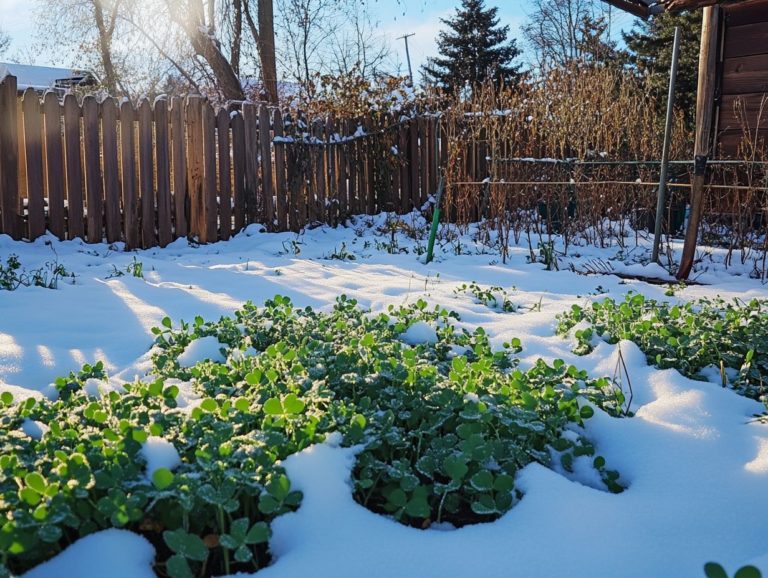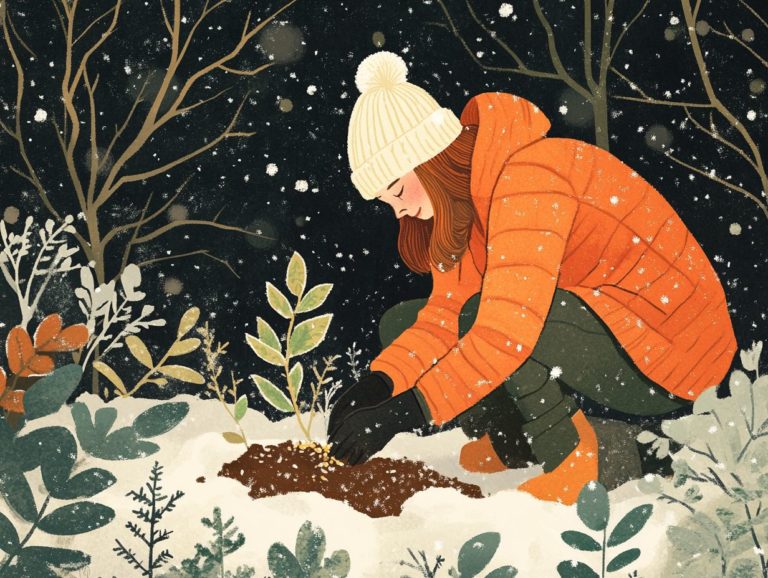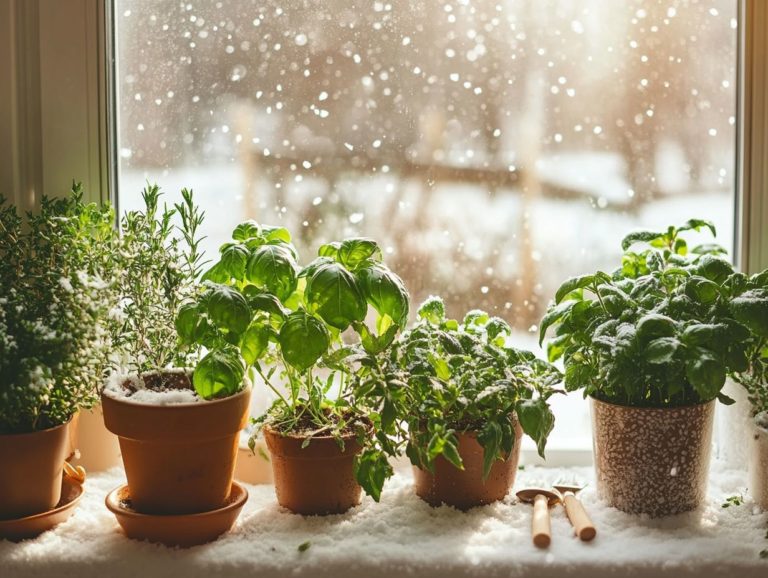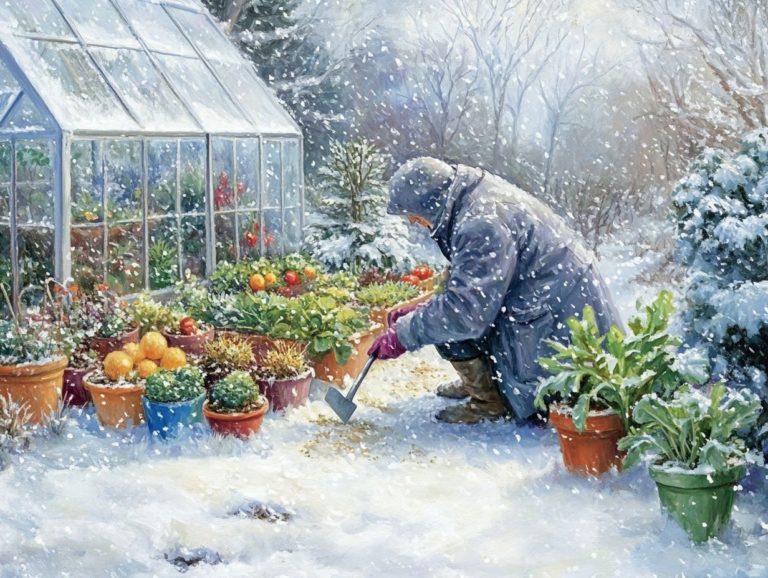Winter Greenhouses: What You Need to Know
Winter greenhouses present a remarkable solution for gardening enthusiasts eager to extend their growing season. They safeguard plants from the cold season’s unforgiving elements.
This guide delves into the many benefits of winter greenhouses. It explores the various types available and outlines essential design considerations to keep in mind.
You ll learn how to maintain your winter greenhouse throughout the year. Additionally, you ll uncover the best cold-tolerant plants that will thrive in this unique environment.
Whether you re a seasoned gardener or just starting your journey, this guide equips you with everything necessary to cultivate a thriving vegetable garden in winter.
Contents
Key Takeaways:
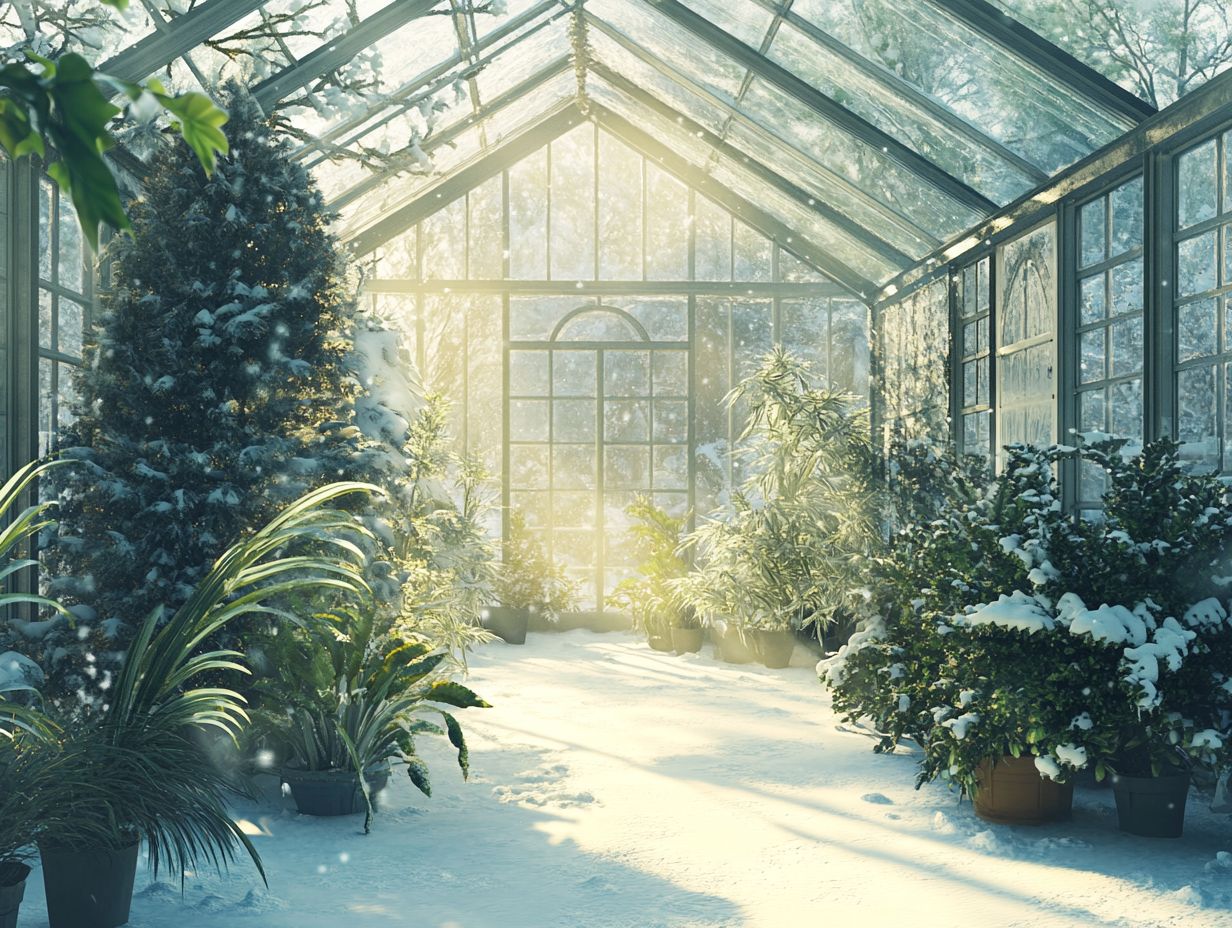
- Winter greenhouses extend the growing season, allowing for year-round cultivation of cold-tolerant crops.
- They protect plants from harsh weather, providing a controlled environment for optimal growth.
- When designing and building a winter greenhouse, consider factors like location, orientation, and insulation for maximum efficiency.
What are Winter Greenhouses?
A winter greenhouse is your ticket to an extended growing season. It provides a structure for cultivating plants that can survive cold weather, even during the harshest winter months.
By using heat retention techniques and smart design, these innovative structures allow you, whether you’re in Canada or beyond, to enjoy a diverse vegetable garden year-round think kale, carrots, leeks, and spinach.
With various shapes and materials available, you can create an urban gardening project or a DIY structure tailored to your climate, such as a geodesic dome or hoop house.
Constructed with insulating materials like polycarbonate panels or glass, these greenhouses effectively trap sunlight. This ensures a stable internal climate, which is crucial for seed germination and crop flourishing.
Winter greenhouses also enhance soil health by maintaining moisture levels and improving nutrient availability. They set the stage for robust plant growth.
Popular designs, such as hoop houses and cold frames, offer unique benefits. They allow you to adapt to your gardening style and temperature challenges.
Ultimately, these greenhouses empower you as a gardener. They encourage sustainable practices, paving the way for year-round food production and homegrown vegetables.
Benefits of Winter Greenhouses
Winter greenhouses offer many advantages. They allow you to cultivate cold-hardy vegetables like arugula and Winter Density lettuce.
This means you can enjoy a steady supply of fresh, homegrown produce, effortlessly sustaining your culinary endeavors throughout the chill of winter.
Extending Growing Season
One of the main benefits of a winter greenhouse is its ability to extend your growing season. You can start planting cold-tolerant crops like kale, scallions, and spinach as early as late winter.
This gardening solution protects your young plants from harsh frost. It captures solar energy to warm the soil, fostering robust early growth and enhancing soil health.
In urban environments, where space might be limited, a winter greenhouse becomes an invaluable asset. It enables you to engage in vegetable gardening even in small areas.
You can enhance the efficiency of your greenhouse by using techniques like row covers and heat-retaining materials. These strategies allow for successful cultivation of a diverse range of vegetables, including cucumbers and carrots.
By choosing resilient crops, you can enjoy earlier harvests. This turns your winter gardening practices into a year-round venture, consistently bringing fresh produce to your table.
Don t miss out on the chance to enjoy fresh produce all winter long! Start planning your winter greenhouse today for a bountiful harvest tomorrow!
Protecting Plants from Harsh Weather
Winter greenhouses protect your plants from harsh winter conditions. They maintain a stable environment by efficiently retaining heat and managing temperature, which is crucial for winter planting.
These structures use various insulation methods, such as double-layered polycarbonate panels and deep mulching. These methods trap warmth while sustaining humidity levels that many plants, like tomatoes and peppers, thrive on.
By incorporating proper ventilation techniques, you can ensure that excess moisture doesn t lead to mold or pest infestations. This keeps your crops healthy and productive.
Regularly monitoring humidity and using ways to control pests naturally can help create an ideal environment for delicate winter crops. With careful planning, your greenhouse can flourish and yield an impressive harvest, even in the coldest months!
Types of Winter Greenhouses
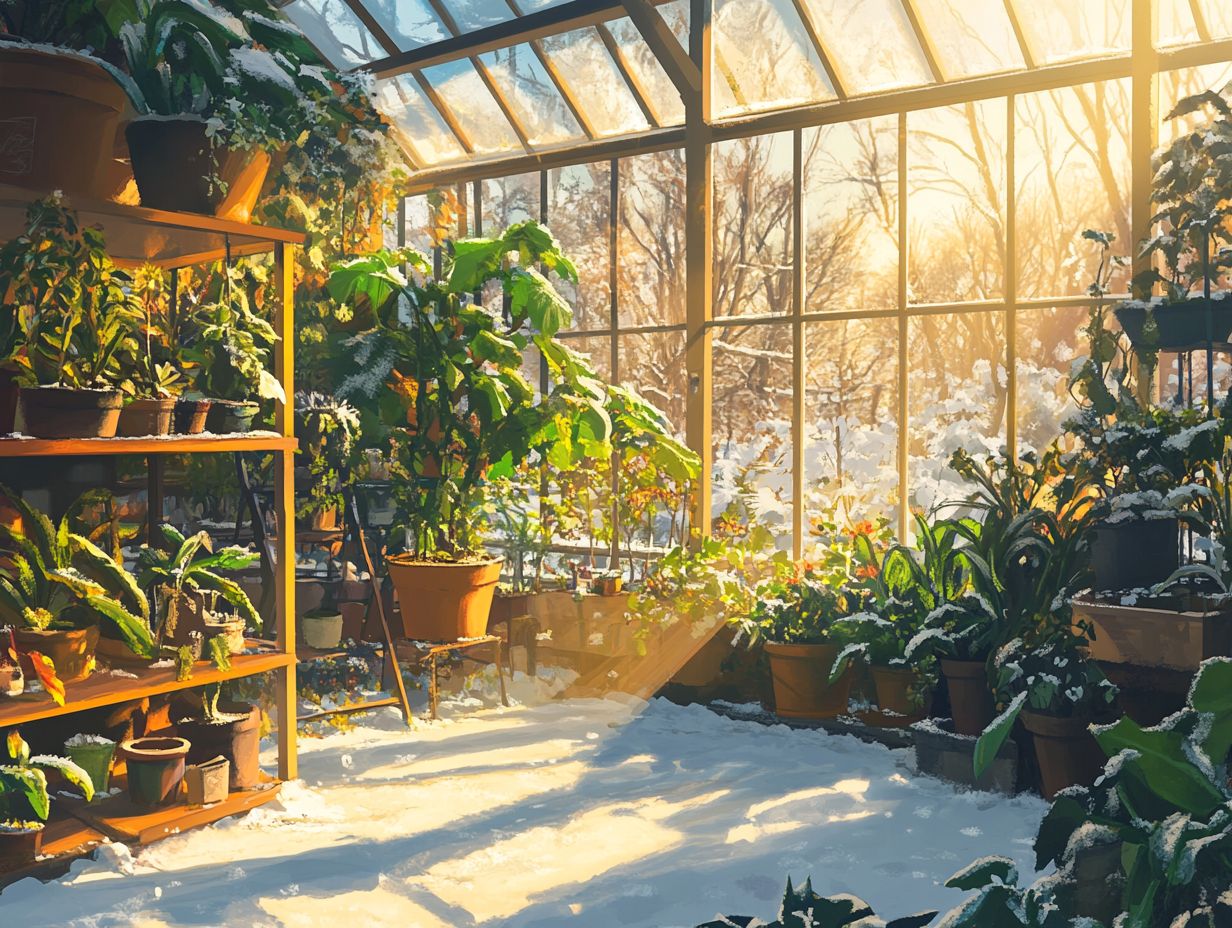
You ll find that winter greenhouses come in various types, each crafted to optimize functionality and efficiency. These include both attached and detached structures, alongside passive and active solar models, all designed with specific climate considerations.
Attached vs. Detached
When deciding between attached and detached winter greenhouses, it’s crucial to weigh your space constraints alongside the unique benefits of each option. An attached greenhouse often benefits from your home’s warmth, creating a cozy environment for your plants.
A detached greenhouse offers the freedom to design it exactly as you envision. This choice can significantly impact your success in urban gardening, especially in regions with specific climate challenges.
An attached greenhouse typically excels in temperature management, thanks to heat retention from your home. This makes it a solid choice if you want to extend your growing season.
A detached greenhouse opens up a world of possibilities for crop variety. You can position it to capture optimal sunlight and wind patterns, potentially supporting a broader range of plants. However, detached structures may require more finesse in temperature control, which could be daunting for those new to DIY projects.
Passive vs. Active Solar
Passive solar winter greenhouses harness the power of natural sunlight and thermal mass to maintain a comfortable temperature. In contrast, active solar systems use mechanical devices to boost heat retention and enhance growing conditions during chilly months.
Understanding these approaches can impact the efficiency and sustainability of your agricultural practices. Passive solar designs often utilize features like expansive south-facing windows and thermal mass materials. These features absorb and release heat, fostering optimal soil health and promoting robust plant growth.
Active solar systems rely on technology like fans and pumps to circulate warmth. While both methods aim for effective temperature management, their differences in complexity and initial investment may influence your decision-making process. It’s essential to assess the benefits and challenges that each system offers.
Designing and Building a Winter Greenhouse
Designing and building a winter greenhouse requires meticulous planning and thoughtful consideration of key elements, including location, materials, and climate factors. This careful approach is essential to create optimal conditions for growing vegetables throughout the cold season.
By taking these aspects into account, you can ensure that your greenhouse thrives and produces a bountiful harvest, even when the temperature drops.
Key Considerations and Tips
When building your winter greenhouse, several key considerations are crucial. Understanding your local climate conditions is vital, as is selecting the right materials for your DIY structures.
Implementing effective temperature management and pest management strategies will help create an ideal environment for your cold-tolerant crops.
Prioritizing soil health is essential. Incorporate organic matter, such as compost, and ensure good drainage to support the growth of robust plants. Regularly monitor soil nutrients to make informed decisions about necessary amendments.
Efficient watering practices, like drip irrigation, conserve water and deliver moisture directly to plant roots, fostering healthier growth.
For crop selection, choose varieties that thrive in cooler temperatures to ensure successful harvests. Mastering optimal harvesting techniques at the right time will help maximize yield while preserving quality.
Maintenance and Care for Winter Greenhouses
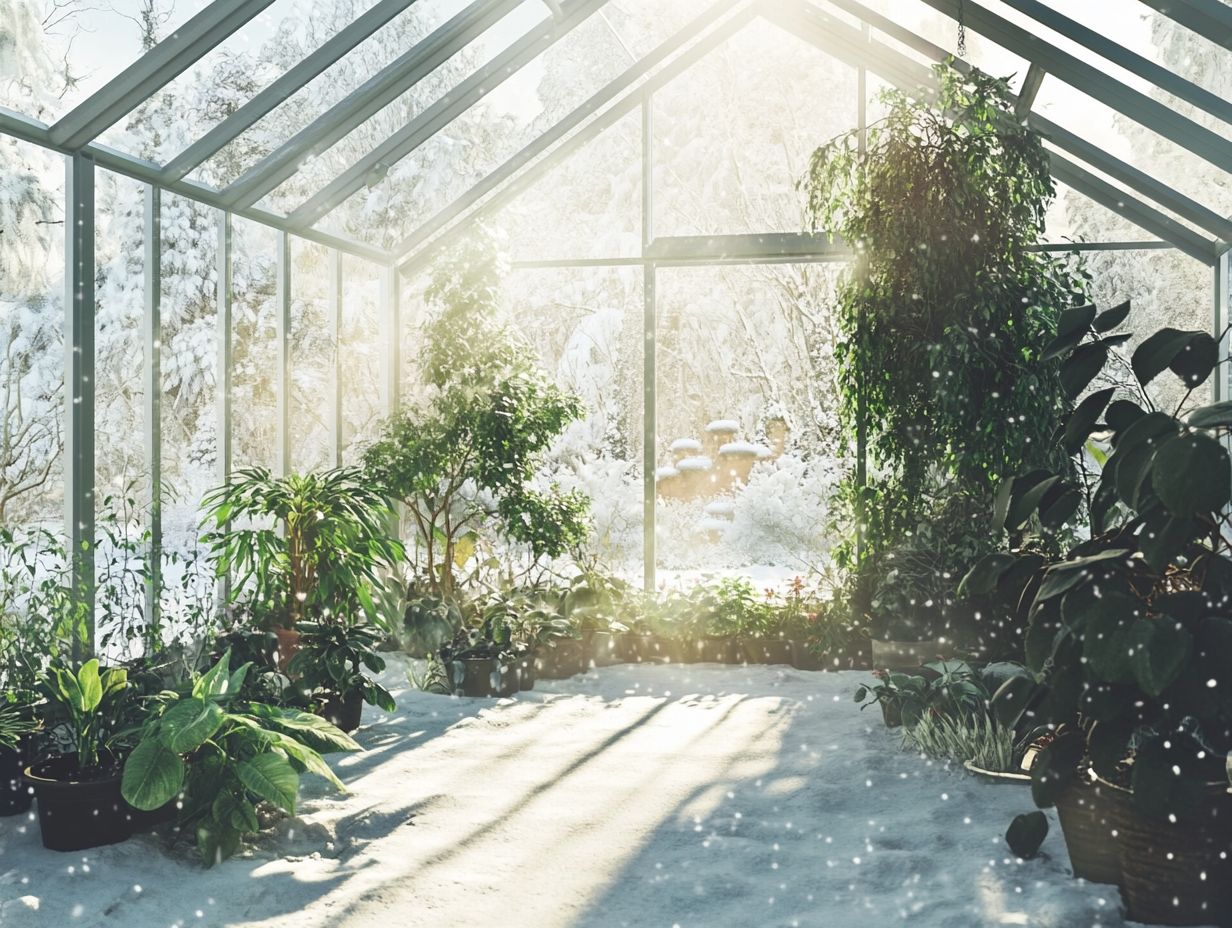
To keep your winter greenhouse thriving, regular maintenance is key! This involves a year-round commitment to tasks such as managing temperature, controlling pests, and monitoring soil health. These essential elements support successful crop growth.
By prioritizing these aspects, you can create an optimal environment that promotes thriving plants and maximizes your greenhouse’s potential.
Year-Round Maintenance Tasks
Year-round maintenance involves a range of vital activities. Regularly monitor temperature, manage humidity, and assess soil health to create ideal conditions for your homegrown vegetables.
Additionally, selecting the right crops is key to maximizing your yield and fostering resilience in the greenhouse. As spring arrives, focus on planting hardy varieties that thrive in cooler temperatures. Implement pest management strategies early to prevent infestations.
As summer approaches, adjust your watering schedule to counter rising temperatures. When fall arrives, handle your produce carefully to avoid bruising, and prepare the greenhouse for winter by reinforcing insulation and checking the overall design to optimize airflow.
Choosing the Right Plants for Winter Greenhouses
Selecting appropriate plants is essential for maximizing yield and achieving successful growth. Concentrate on cold-hardy varieties like kale, carrots, and spinach. These resilient choices thrive in cooler temperatures and adapt well to reduced daylight hours.
Cold-Hardy and Winter Vegetables
Cold-hardy vegetables like kale, leeks, and North Pole lettuce are perfect for winter greenhouses. Enjoy fresh, homegrown produce even during chilly months when traditional gardens go dormant.
These resilient crops flourish in cooler temperatures and need minimal sunlight, making them ideal for winter. Ensure adequate ventilation and maintain a consistent temperature within your greenhouse for successful cultivation.
Implementing crop rotation (rotating different crops to improve soil health) and companion planting strategies (planting compatible crops together) will help keep pest infestations at bay, enhancing both health and yield. Knowing the right harvesting techniques will help preserve delicate flavors and nutrients, ensuring an abundance of fresh greens for your winter table.
Frequently Asked Questions
Start planning your winter greenhouse today!
What is a winter greenhouse and why do I need one?
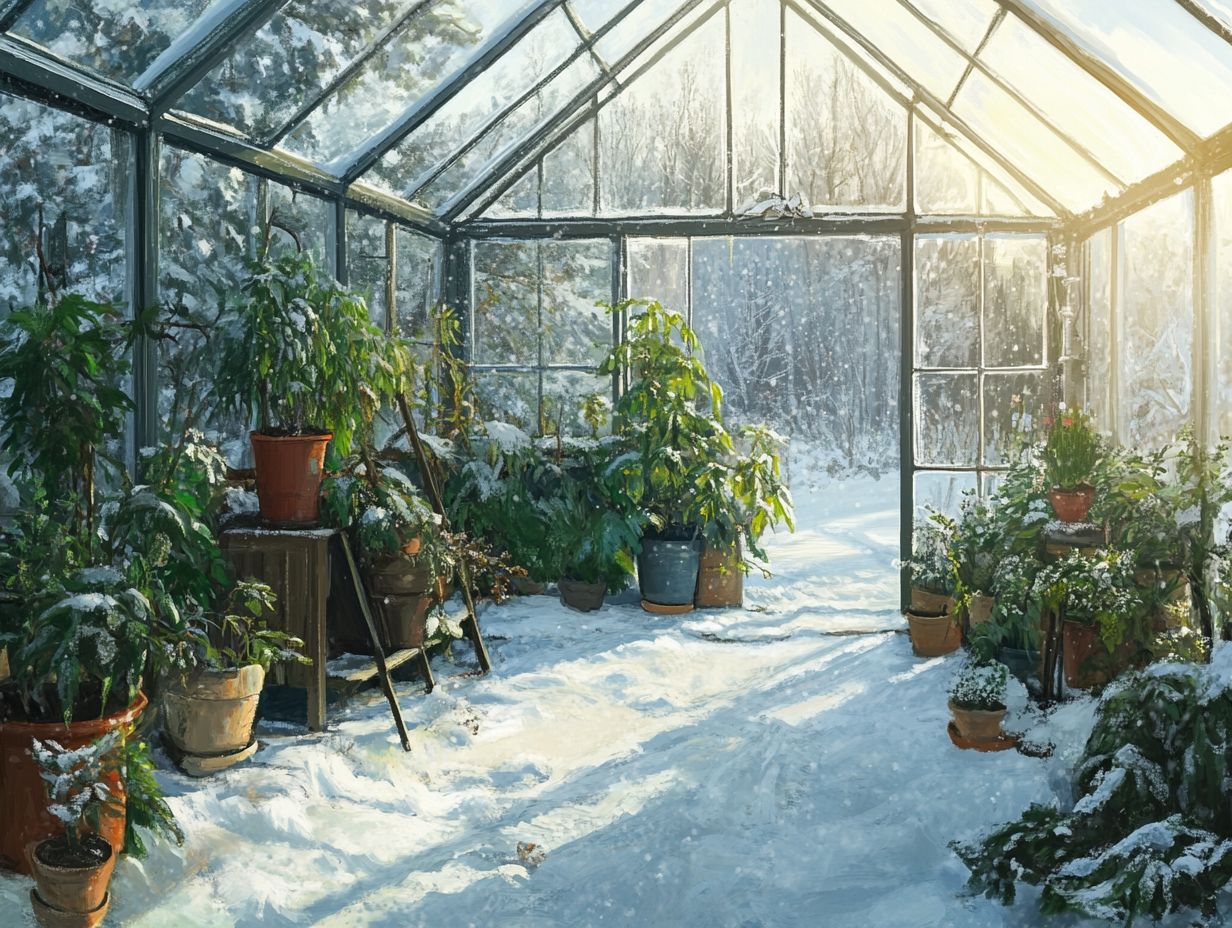
A winter greenhouse is a structure that allows you to extend your growing season during the colder months. It provides a warm and protected environment for your plants to thrive, even in the midst of harsh winter weather.
A winter greenhouse helps you grow fresh produce and flowers all year. This means you can enjoy them even in winter.
What type of plants can I grow in a winter greenhouse?
You can grow various plants in a winter greenhouse. Cold-hardy vegetables, herbs, and flowers are excellent options.
Some popular choices include kale, spinach, carrots, and pansies. It’s important to research which plants are suitable for your specific climate and the temperature range of your winter greenhouse.
Do I need any special equipment for my winter greenhouse?
Yes, there are a few key pieces of equipment that are essential for a winter greenhouse. These include a heating system (like electric heaters or gas heaters), insulation, and proper ventilation (the flow of air in and out of the greenhouse).
You may also want to invest in grow lights to provide additional light during the shorter winter days. Choose equipment designed for winter greenhouse use.
Can I build my own winter greenhouse?
Absolutely! You can build your own winter greenhouse and enjoy fresh plants from your backyard! However, it requires careful planning and knowledge of construction and greenhouse gardening.
Consider factors such as location, materials, and ventilation to create a successful winter greenhouse. Alternatively, you can purchase pre-made winter greenhouse kits that come with all the necessary materials and instructions.
How do I maintain my winter greenhouse?
Maintaining a winter greenhouse requires regular attention, especially during extreme weather conditions. You must monitor the temperature and humidity levels to keep your plants healthy.
Water your plants regularly and provide adequate ventilation. It’s also important to regularly check for pests and diseases, as they can thrive in the warm and protected environment of a greenhouse.
Is it cost-effective to have a winter greenhouse?
Investing in a winter greenhouse may seem costly at first, but it pays off over time! By growing your own produce and flowers year-round, you can save money on buying these items from the store.
Additionally, having a winter greenhouse can also extend the life of your plants, allowing you to get multiple harvests from the same crop.


